The three brief Formula 1 tests ahead of the current season belied how much had gone on since the last race in November: Infiniti subbed out for Tag Heuer, Renault is back, the all new Haas F1 team, a revamped Manor, three brand new drivers and two returning drivers, a raft of regulation changes among the newly tilled soil. The four engine manufacturers spent a combined 67 tokens among the 138 in the kitty, Renault using just seven of their 32.
The only conclusive proof to come from the annual intermission was the otherworldly capability of Mercedes-AMG Petronas. The Silver Arrows didn't even try the super- and ultra-soft tires, focusing on reliability instead of speed. The result? They ran more than 19 race distances, obliterating the lap totals of every other team.
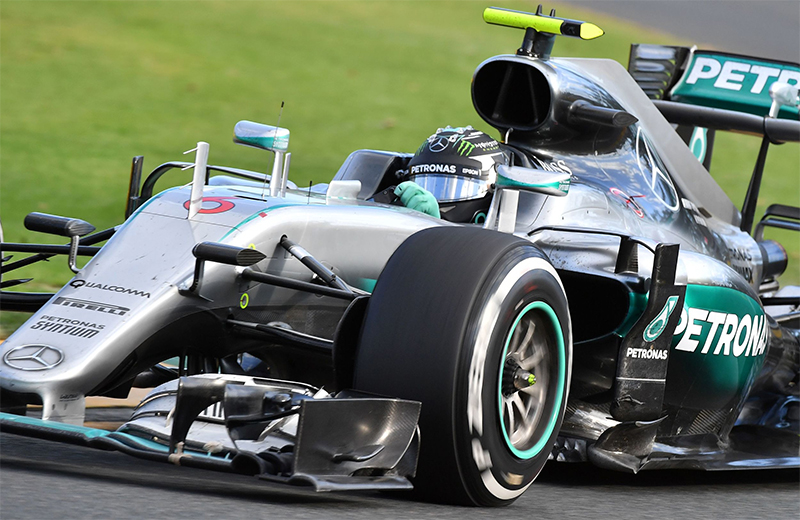
There are certainly a few people who enjoyed the complicated new rolling-elimination qualifying format fast-tracked to approval just a few weeks ago. They were wildly outnumbered by those who thought it was awful, including the same team heads who voted for it. We'd probably have to go back to the debacle at the 2005 Indianapolis Grand Prix for an equivalent fiasco when Michelin pulled its teams over safety fears, leaving six cars out of 20 to qualify. In Australia, within 24 hours of the conclusion of qualifying, the new format had itself been eliminated.
Nevertheless, qualifying also taught us what didn't happen over the winter: any other team progressing enough to outduel Mercedes.
After admitting that he dropped off after winning the championship last year, then getting questioned in the press for some dubious off-season activities, Lewis Hamilton proved he can still turn it on when he wants to. The Brit smoked the Albert Park track in 1:23.837, more than three-tenths of a second ahead of teammate Nico Rosberg in second place. Ferrari did make strides during the off-season, but only enough to keep the same gap it had to Mercedes last year: Sebastian Vettel lined up third, a half-second behind Rosberg, teammate Kimi Räikkönen another four-tenths back in fourth place. Max Verstappen said Toro Rosso is the best of the rest, the Dutchman taking fifth place in front of Felipe Massa for Williams in sixth and Toro Rosso teammate Carlos Sainz in sixth.
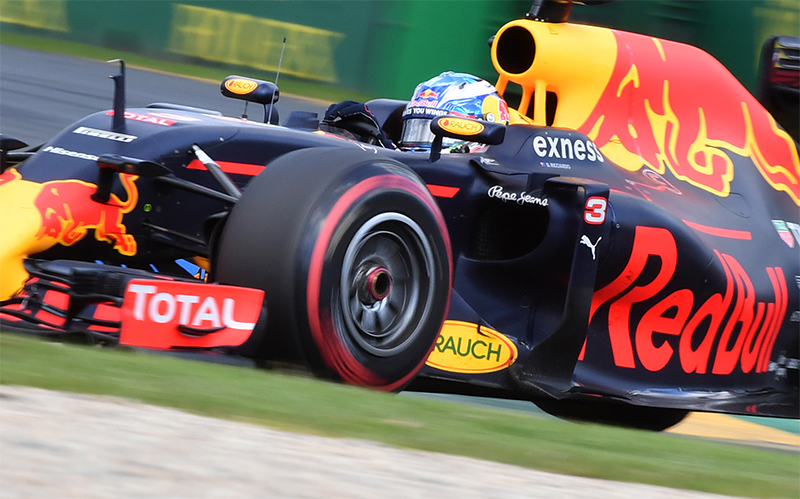
Daniel Ricciardo – who wasn't smiling after qualifying – kept Red Bull and its new "Tag Heuer" engines in the conversation with eighth on the grid. Force India resumed its usual early-season strength, rounding out the front-runners with Sergio Perez in ninth trailed by Nico Hülkenberg in tenth. The only driver well out of place was Daniil Kvyat, apparently a victim of "poor tactics."
McLaren had to have been happy that drivers Fernando Alonso and Jenson Button made it to the sharp end of Q2. If this is their true level and they can launch a strong development path, the team could be a regular top-ten fixture in short order.
US team Haas drivers Romain Grosjean and Esteban Gutíerrez were booted out during Q1 and line up ahead of the two last-placed Manors. However, Haas didn't make a bad showing for the team's first-ever quali – they didn't time the drivers' hot laps properly.
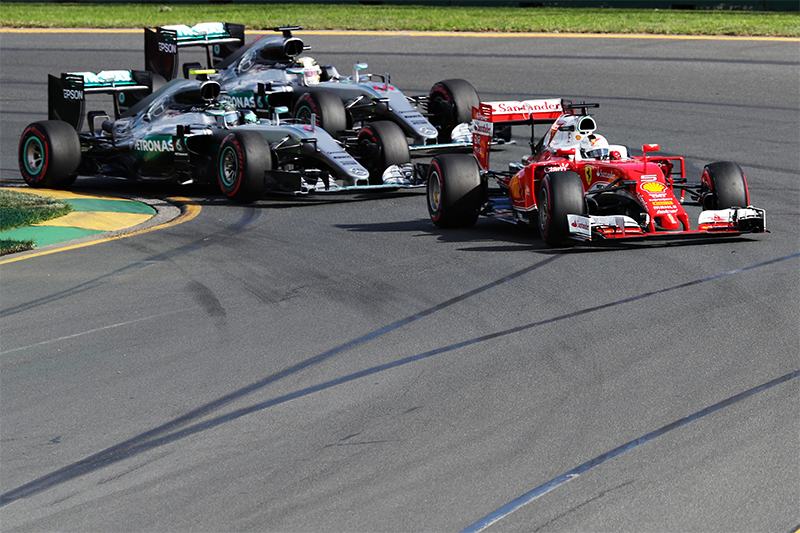
If perplexing qualifying won't rearrange the grid, poor starts can always be relied on. Both Hamilton and Rosberg made unsatisfactory starts, letting Vettel and Räikkönen slip up the middle during the sprint to Turn 1. Then, at the exit of the first turn Rosberg ran way wide in the melee, making slight contact with Hamilton and pushing him out to the curbing. By the end of Turn 2 the order was Vettel, Räikkönen, and Rosberg, with Hamilton trailing in seventh. Verstappen, Massa, and Sainz were between them.
Round One showed Ferrari has the pace to keep up with Mercedes. Vettel slowly grew the gap to his teammate in second, Rosberg stayed Räikkönen but was unable to get near enough to make the pass. Hamilton got past Sainz on the first lap, but couldn't get past Verstappen on track – and that Toro Rosso is using a year-old Ferrari engine.
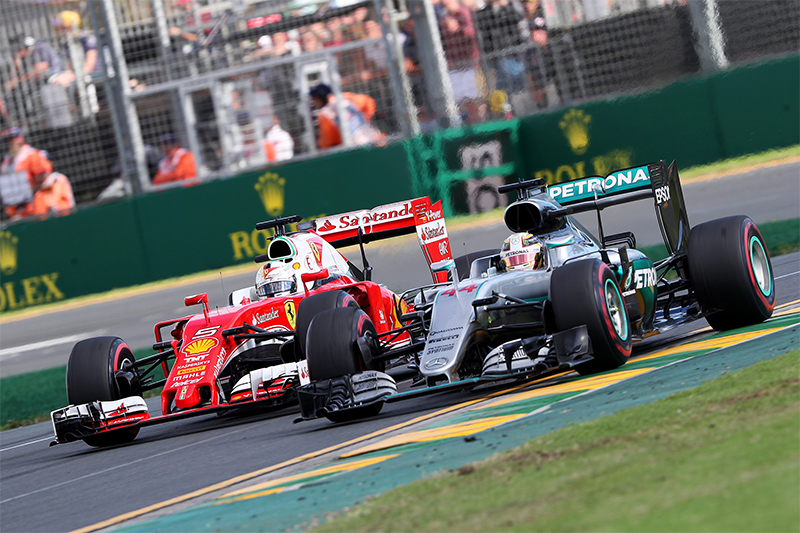
The order didn't change until the first round of pit stops: on Lap 17 the tweaked order was Vettel, Rosberg, Räikkönen, and Hamilton. The key detail at this point was that the two Ferraris had gone onto super-soft tires, Rosberg was on softs, and Hamilton had put on mediums trying to get to the end of the race. Mercedes had done almost all of its pre-season testing on the medium compound.
Lap 17 would bring a shock we won't forget for the entire season, when Alonso ran into the back of Gutíerrez on the run to Turn 3. Gutíerrez, in the Haas, happened to be in the middle of the track and braked quite a bit earlier than the McLaren driver. Alonso, already closing in for the pass, didn't have time to get around him and the McLaren's front right hit the Haas' rear left, shooting the McLaren up into the air at enormous speed. He slid down the tarmac then flipped when he hit the gravel trap, coming to rest upside down in a chassis that looked like it had been extracted from a crusher. Everyone walked away from it; Alonso and the stewards deemed it a racing incident.
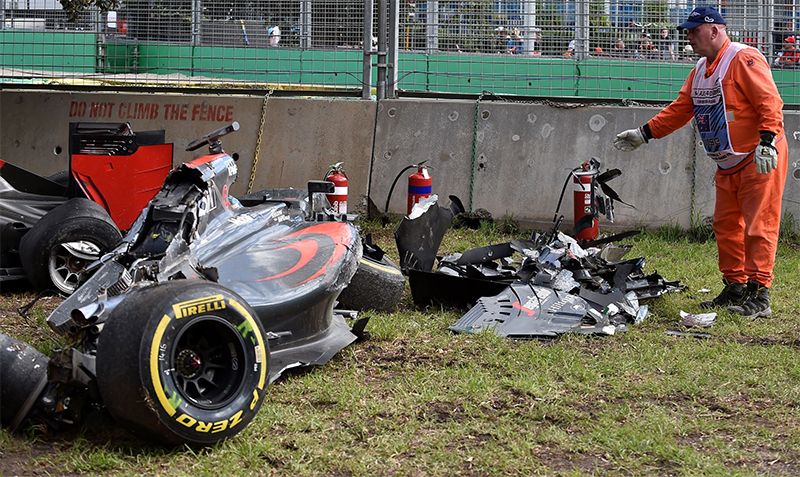
That brought out the Safety Car then the red flag. Mercedes made its winning move while every car was stationary, switching Rosberg to medium tires. Ferrari stayed on super-softs. Racing resumed after 20 minutes on Lap 19, within five laps of the restart it was clear the Ferrari strategy probably wouldn't work. Vettel couldn't lap more than 0.2 seconds faster than Rosberg. Vettel definitely had to pit again and would never get the 24-second gap needed to change tires and still come out near the lead.
That's how Rosberg won the race, by completing the distance on the medium compounds that Mercedes knows so well, the German taking his fourth victory in a row dating back to last season. That's also how Mercedes scored a one-two to start the season, Hamilton staying on track with his mediums to leapfrog every other runner ahead, including Vettel.
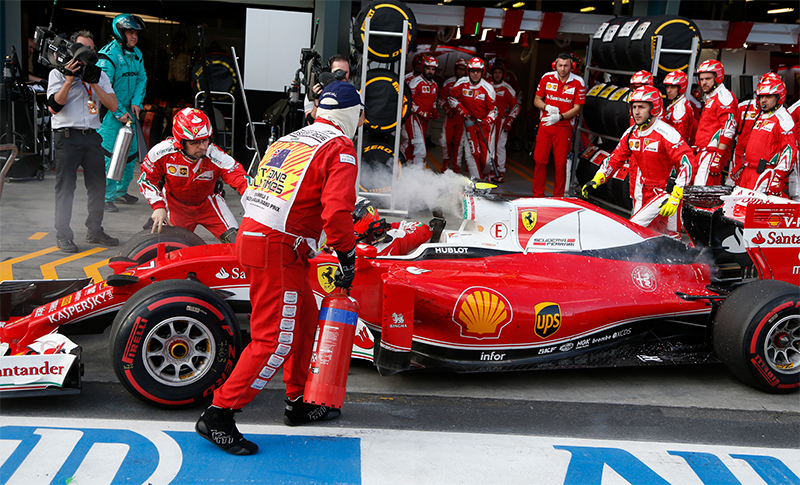
Räikkönen had retired on Lap 23 after a mechanical problem ended his race, flames erupting from his airbox in the pits. That elevated Ricciardo in his quiet race to fourth, climbing through the field without attention. On Lap 2 he was ninth. On Lap 7 he was eighth. On Lap 16 he was sixth. By the time of the race restart he was fourth. The Tag Heuer engine works much better with the Red Bull chassis than it does when badged as a Renault in the Renault chassis. That's half-good news for the Ricciardo and the team. The half-bad news is that Kvyat couldn't start with race due to an electrical issue.
Felipe Massa crossed the line fifth, his Williams unaccountably off the pace in the opening stint, then able to hold its own decently enough after the restart. We'll look to the coming races to find out if Red Bull or Williams is the best of the rest.
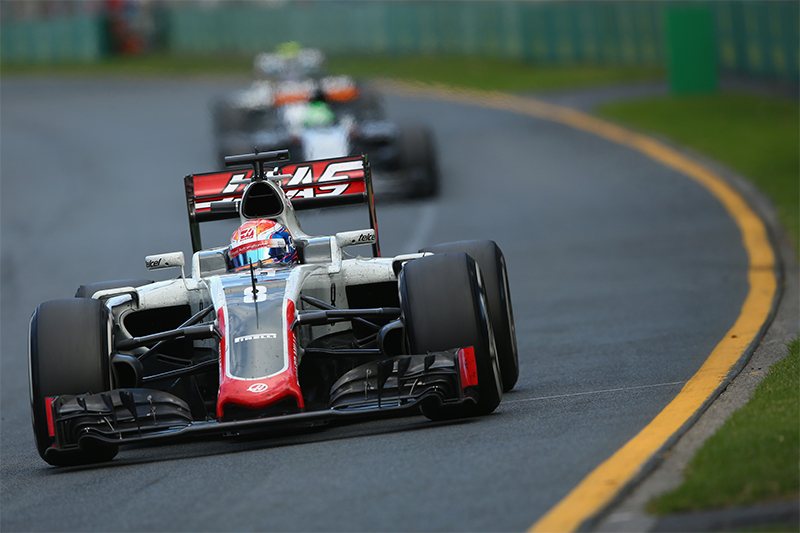
Romain Grosjean took the checkered flag in sixth for Haas, perhaps the revelation of the race weekend. As he said, and rightly so, it's like a victory for the team. Haas also made its winning move when all the cars were stopped – Grosjean hadn't pitted when the big accident happened, so he got a free pit stop when the race was red flagged, went onto the mediums and stayed out for the remainder. If he had had to stop, he would have finished the race somewhere around Jenson Button in 14th and Felipe Nasr in 15th. Yes, Haas got lucky. But the team had done a good enough job to take advantage of that luck, and that's a genuine triumph. Toyota was the last brand new team to score points in its first race with Mika Salo in 2002 (Brawn GP and Red Bull weren't brand new teams; they took over existing teams). Strange trivia fact: the last American team to score points was the entirely unaffiliated Team Haas in 1986 at Monza with Australian Alan Jones driving.
Hülkenberg brought his Force India home in seventh ahead of Bottas in the Williams in eighth, both drivers moving up three places from their grid positions without any fanfare.
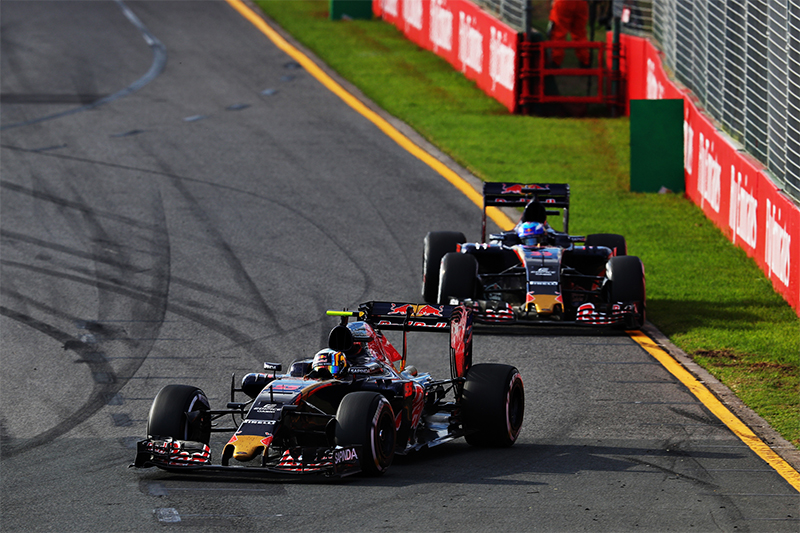
The Toro Rosso duo of Sainz and Verstappen closed out the top ten, the Dutchman having spent half his race driving in literal anger. The team pitted Sainz first instead of Verstappen, even though Verstappen was ahead on track. When the Dutch teenager came out behind the Spanish teenager and couldn't get around him on track, and the team didn't force Sainz to move over for him, every few laps Verstappen would let the team know exactly what he thought of the situation. If Toro Rosso has a Swear Jar, there are quite a few Aussie dollars in it.
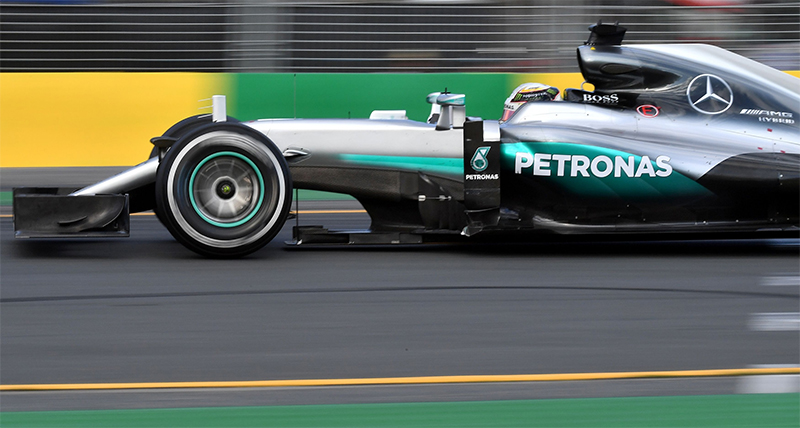
The podium, one we've seen before, was Rosberg, Hamilton, Vettel. It was Rosberg's second Australian victory, 31 years after his father Keke won the first-ever Australian Grand Prix in 1985, and Mercedes' seventh victory in a row from back to last season. Hamilton's second place tied him with Michael Schumacher's six podium finishes at Australia. His second connection to Schumacher happened a day earlier when he took his 50th pole position – only the German driver and Ayrton Senna have won at least that many poles.
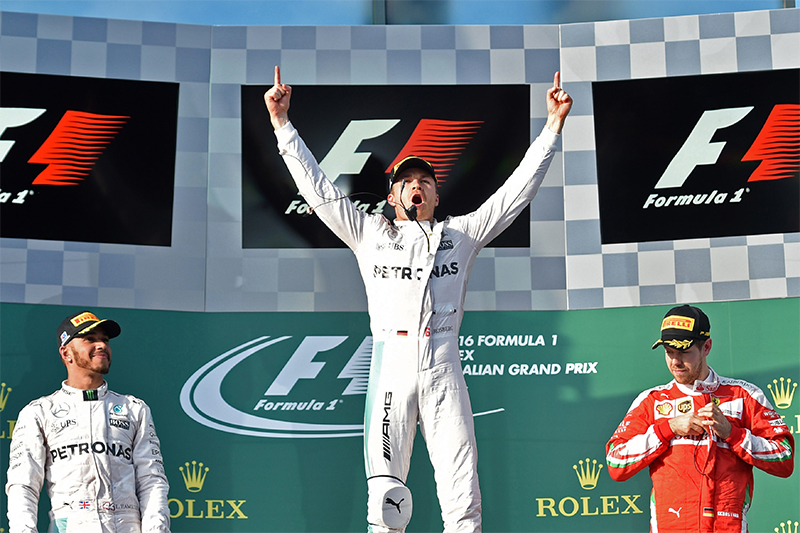
The account is open, Rosberg with 25 points, Hamilton with 18, Vettel with 15 in the Driver's Championship. Mercedes gets the maximum possible in the Constructor's Championship with 43 points, followed by Ferrari with 15, Williams with 14, Red Bull with 12, and Haas with a gigantic eight. There's a two-week break until Bahrain that kicks off three races in April, we'll be back then.
The only conclusive proof to come from the annual intermission was the otherworldly capability of Mercedes-AMG Petronas. The Silver Arrows didn't even try the super- and ultra-soft tires, focusing on reliability instead of speed. The result? They ran more than 19 race distances, obliterating the lap totals of every other team.

There are certainly a few people who enjoyed the complicated new rolling-elimination qualifying format fast-tracked to approval just a few weeks ago. They were wildly outnumbered by those who thought it was awful, including the same team heads who voted for it. We'd probably have to go back to the debacle at the 2005 Indianapolis Grand Prix for an equivalent fiasco when Michelin pulled its teams over safety fears, leaving six cars out of 20 to qualify. In Australia, within 24 hours of the conclusion of qualifying, the new format had itself been eliminated.
Nevertheless, qualifying also taught us what didn't happen over the winter: any other team progressing enough to outduel Mercedes.
After admitting that he dropped off after winning the championship last year, then getting questioned in the press for some dubious off-season activities, Lewis Hamilton proved he can still turn it on when he wants to. The Brit smoked the Albert Park track in 1:23.837, more than three-tenths of a second ahead of teammate Nico Rosberg in second place. Ferrari did make strides during the off-season, but only enough to keep the same gap it had to Mercedes last year: Sebastian Vettel lined up third, a half-second behind Rosberg, teammate Kimi Räikkönen another four-tenths back in fourth place. Max Verstappen said Toro Rosso is the best of the rest, the Dutchman taking fifth place in front of Felipe Massa for Williams in sixth and Toro Rosso teammate Carlos Sainz in sixth.

Daniel Ricciardo – who wasn't smiling after qualifying – kept Red Bull and its new "Tag Heuer" engines in the conversation with eighth on the grid. Force India resumed its usual early-season strength, rounding out the front-runners with Sergio Perez in ninth trailed by Nico Hülkenberg in tenth. The only driver well out of place was Daniil Kvyat, apparently a victim of "poor tactics."
McLaren had to have been happy that drivers Fernando Alonso and Jenson Button made it to the sharp end of Q2. If this is their true level and they can launch a strong development path, the team could be a regular top-ten fixture in short order.
US team Haas drivers Romain Grosjean and Esteban Gutíerrez were booted out during Q1 and line up ahead of the two last-placed Manors. However, Haas didn't make a bad showing for the team's first-ever quali – they didn't time the drivers' hot laps properly.

If perplexing qualifying won't rearrange the grid, poor starts can always be relied on. Both Hamilton and Rosberg made unsatisfactory starts, letting Vettel and Räikkönen slip up the middle during the sprint to Turn 1. Then, at the exit of the first turn Rosberg ran way wide in the melee, making slight contact with Hamilton and pushing him out to the curbing. By the end of Turn 2 the order was Vettel, Räikkönen, and Rosberg, with Hamilton trailing in seventh. Verstappen, Massa, and Sainz were between them.
Round One showed Ferrari has the pace to keep up with Mercedes. Vettel slowly grew the gap to his teammate in second, Rosberg stayed Räikkönen but was unable to get near enough to make the pass. Hamilton got past Sainz on the first lap, but couldn't get past Verstappen on track – and that Toro Rosso is using a year-old Ferrari engine.

The order didn't change until the first round of pit stops: on Lap 17 the tweaked order was Vettel, Rosberg, Räikkönen, and Hamilton. The key detail at this point was that the two Ferraris had gone onto super-soft tires, Rosberg was on softs, and Hamilton had put on mediums trying to get to the end of the race. Mercedes had done almost all of its pre-season testing on the medium compound.
Lap 17 would bring a shock we won't forget for the entire season, when Alonso ran into the back of Gutíerrez on the run to Turn 3. Gutíerrez, in the Haas, happened to be in the middle of the track and braked quite a bit earlier than the McLaren driver. Alonso, already closing in for the pass, didn't have time to get around him and the McLaren's front right hit the Haas' rear left, shooting the McLaren up into the air at enormous speed. He slid down the tarmac then flipped when he hit the gravel trap, coming to rest upside down in a chassis that looked like it had been extracted from a crusher. Everyone walked away from it; Alonso and the stewards deemed it a racing incident.

That brought out the Safety Car then the red flag. Mercedes made its winning move while every car was stationary, switching Rosberg to medium tires. Ferrari stayed on super-softs. Racing resumed after 20 minutes on Lap 19, within five laps of the restart it was clear the Ferrari strategy probably wouldn't work. Vettel couldn't lap more than 0.2 seconds faster than Rosberg. Vettel definitely had to pit again and would never get the 24-second gap needed to change tires and still come out near the lead.
That's how Rosberg won the race, by completing the distance on the medium compounds that Mercedes knows so well, the German taking his fourth victory in a row dating back to last season. That's also how Mercedes scored a one-two to start the season, Hamilton staying on track with his mediums to leapfrog every other runner ahead, including Vettel.

Räikkönen had retired on Lap 23 after a mechanical problem ended his race, flames erupting from his airbox in the pits. That elevated Ricciardo in his quiet race to fourth, climbing through the field without attention. On Lap 2 he was ninth. On Lap 7 he was eighth. On Lap 16 he was sixth. By the time of the race restart he was fourth. The Tag Heuer engine works much better with the Red Bull chassis than it does when badged as a Renault in the Renault chassis. That's half-good news for the Ricciardo and the team. The half-bad news is that Kvyat couldn't start with race due to an electrical issue.
Felipe Massa crossed the line fifth, his Williams unaccountably off the pace in the opening stint, then able to hold its own decently enough after the restart. We'll look to the coming races to find out if Red Bull or Williams is the best of the rest.

Romain Grosjean took the checkered flag in sixth for Haas, perhaps the revelation of the race weekend. As he said, and rightly so, it's like a victory for the team. Haas also made its winning move when all the cars were stopped – Grosjean hadn't pitted when the big accident happened, so he got a free pit stop when the race was red flagged, went onto the mediums and stayed out for the remainder. If he had had to stop, he would have finished the race somewhere around Jenson Button in 14th and Felipe Nasr in 15th. Yes, Haas got lucky. But the team had done a good enough job to take advantage of that luck, and that's a genuine triumph. Toyota was the last brand new team to score points in its first race with Mika Salo in 2002 (Brawn GP and Red Bull weren't brand new teams; they took over existing teams). Strange trivia fact: the last American team to score points was the entirely unaffiliated Team Haas in 1986 at Monza with Australian Alan Jones driving.
Hülkenberg brought his Force India home in seventh ahead of Bottas in the Williams in eighth, both drivers moving up three places from their grid positions without any fanfare.

The Toro Rosso duo of Sainz and Verstappen closed out the top ten, the Dutchman having spent half his race driving in literal anger. The team pitted Sainz first instead of Verstappen, even though Verstappen was ahead on track. When the Dutch teenager came out behind the Spanish teenager and couldn't get around him on track, and the team didn't force Sainz to move over for him, every few laps Verstappen would let the team know exactly what he thought of the situation. If Toro Rosso has a Swear Jar, there are quite a few Aussie dollars in it.

The podium, one we've seen before, was Rosberg, Hamilton, Vettel. It was Rosberg's second Australian victory, 31 years after his father Keke won the first-ever Australian Grand Prix in 1985, and Mercedes' seventh victory in a row from back to last season. Hamilton's second place tied him with Michael Schumacher's six podium finishes at Australia. His second connection to Schumacher happened a day earlier when he took his 50th pole position – only the German driver and Ayrton Senna have won at least that many poles.

The account is open, Rosberg with 25 points, Hamilton with 18, Vettel with 15 in the Driver's Championship. Mercedes gets the maximum possible in the Constructor's Championship with 43 points, followed by Ferrari with 15, Williams with 14, Red Bull with 12, and Haas with a gigantic eight. There's a two-week break until Bahrain that kicks off three races in April, we'll be back then.
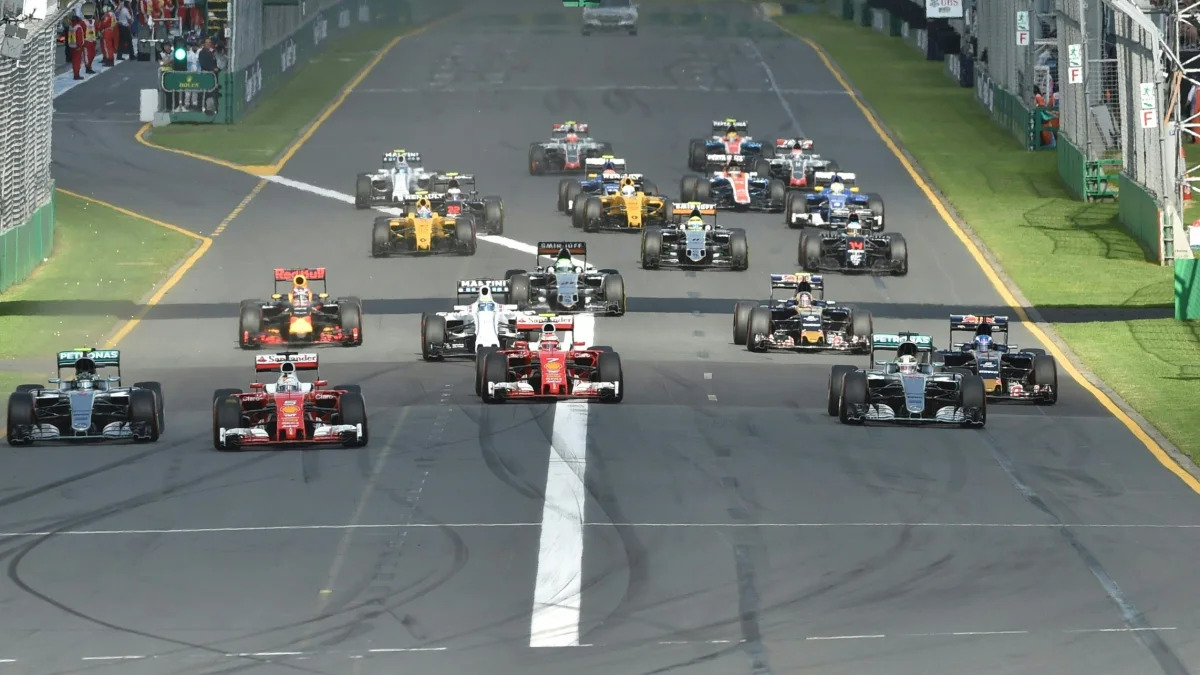









Sign in to post
Please sign in to leave a comment.
Continue